Project Description
The brief asked for the design of a financially and socially sustainable model to provide adequate glasses in low income communities, so that presbyopia ceases to be a barrier for progress in remote locations. Although the focus was India, the model had to be replicable in order to be applied to any region of the developing world.
The solution provided was a social enterprise – view project details below for more detailed information.
Applied Capabilities
Business Design ~ Innovation Strategy ~ Social Innovation
Project Timeline
1 week
Team members
Danilo Conti, Eugenio Perez de Lima, Isabel Maldonado, Juan Sebastian Sierra, Mauricio Guillen, Suzanne Balima
Research Highlights
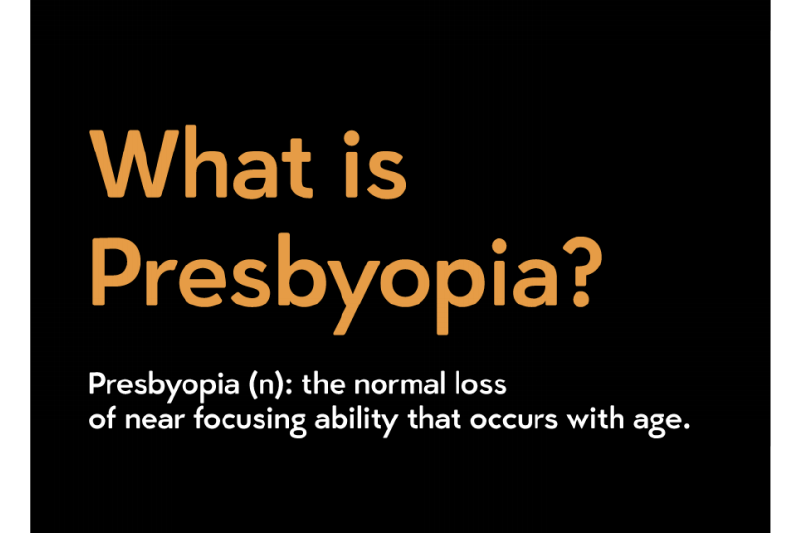
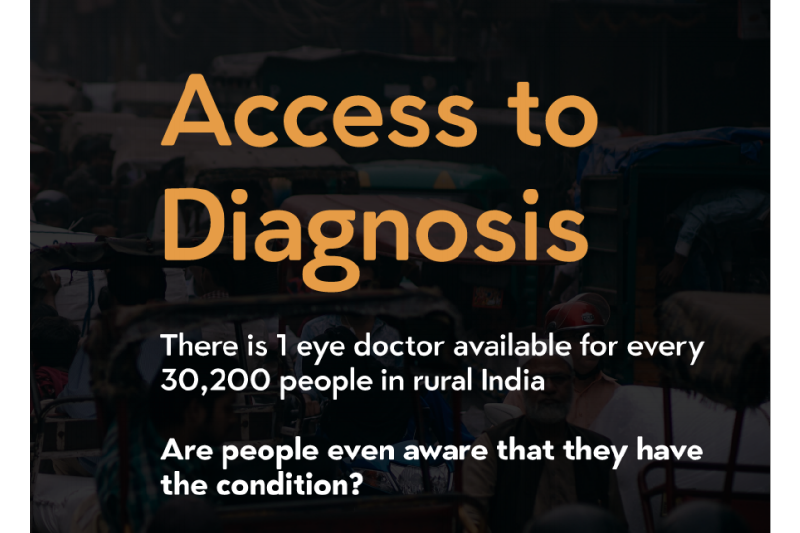
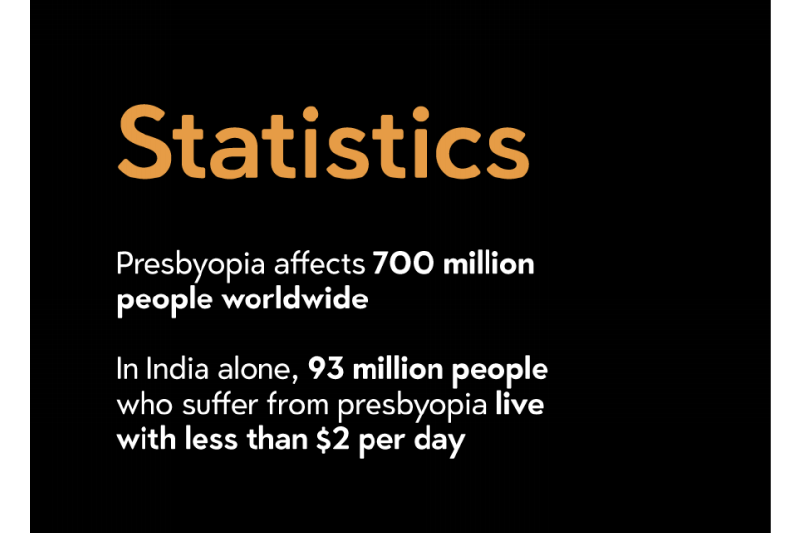
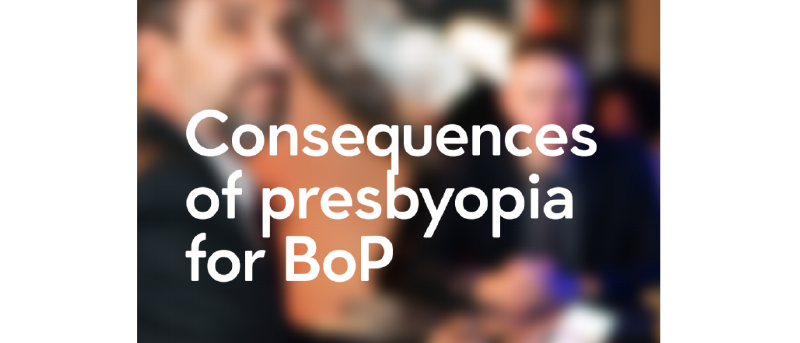
- Inability to earn an income due to poor productivity (example: mechanics, tailors, bookkeepers)
- Financial instability
- Decreased quality of life (unable to cook, read…)
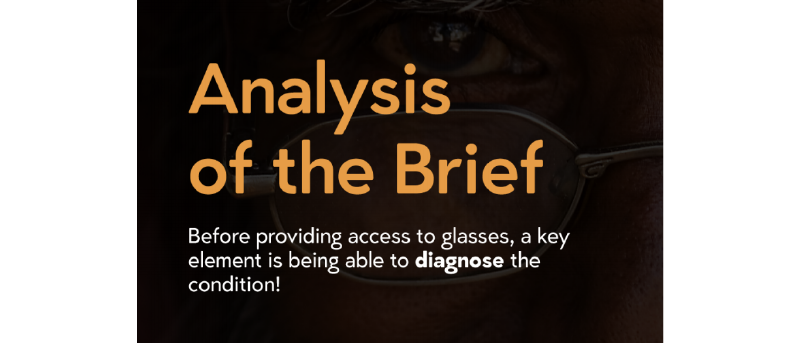
Took a step back and identified that in order to provide glasses, the disease needs to be diagnosed beforehand. With regards to that, we’ve identified that the presbyopia can easily be tested, unlike other eye conditions.
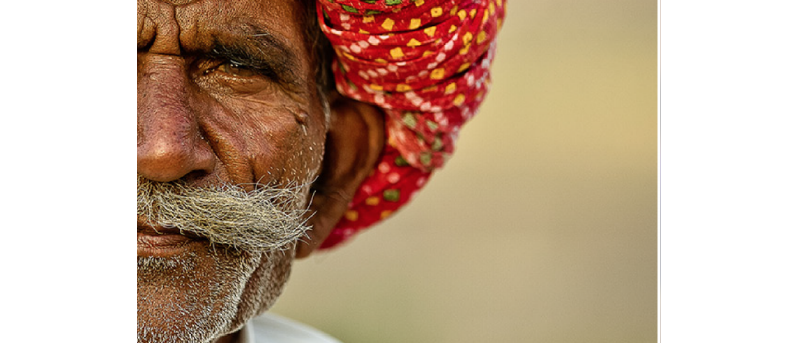
… make people get diagnosed?
… provide glasses to those in need?
… make access to the glasses affordable for the base of the pyramid?
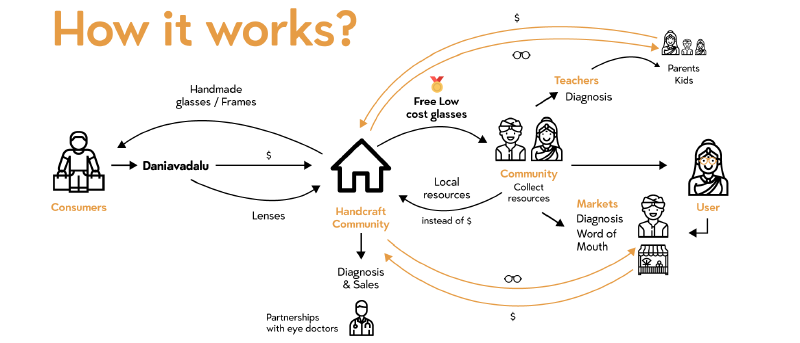
On one hand: we are partnering up with eyeglass companies from developing countries, who provide the lenses.
On the other hand, in India: we are using local waste, leveraging local artisans and local structures of authority to diagnose, manufacture and distribute low-cost eyeglasses.
*** Please refer to diagram above. ***
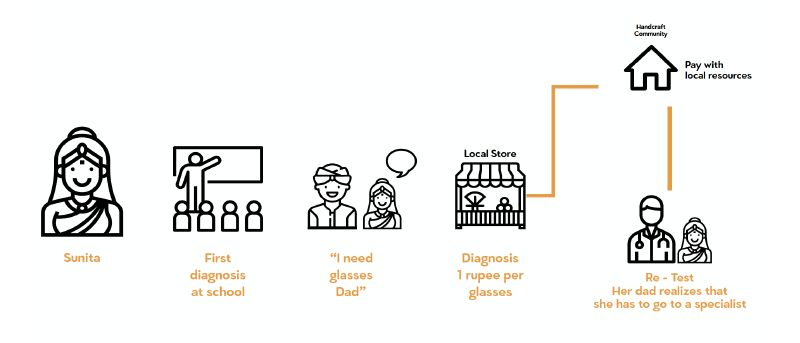
Sunita’s journey begins when she is diagnosed at school. After informing her dad, they go to the one of the artisans / sales point to purchase a pair; they bring along local resources as a form of payment, as they cannot afford to pay cash.
A second diagnosis happens there; the 2nd diagnosis shows that it is not presbyopia so she is sent to an eye doctor, another partner in our ecosystem..
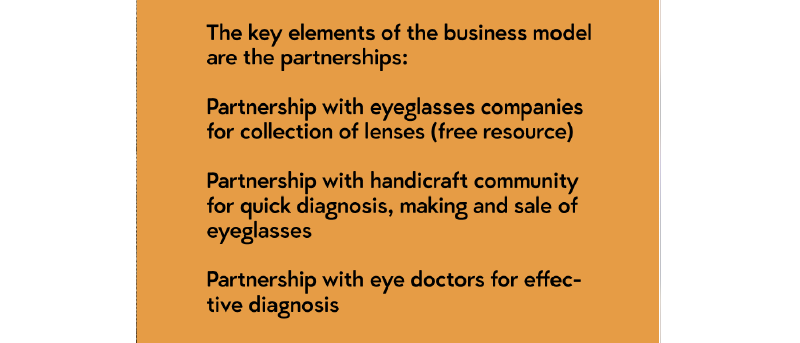
- Eyeglasses companies in developed countries: provide free lenses as part of their Corporate Social Responsibility (CSR)
- Local artisan community: manufacture the eyeglasses with local materials and the lenses provided
- Local structures of authority/influence: such as schools, markets; these will be points for diagnosis and word-of-mouth marketing.
- Eye doctors: for effective diagnosis and treatment of other eye conditions
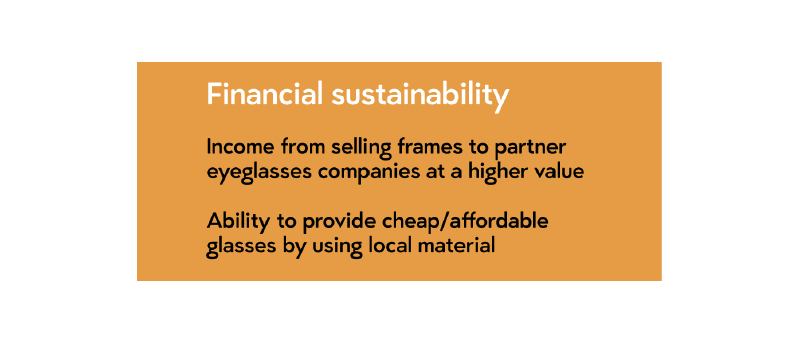
Revenue is generated by selling the glasses to the base of the pyramid. Alternatively, the frames produced by the artisans are sold to eyeglass companies at a higher price.
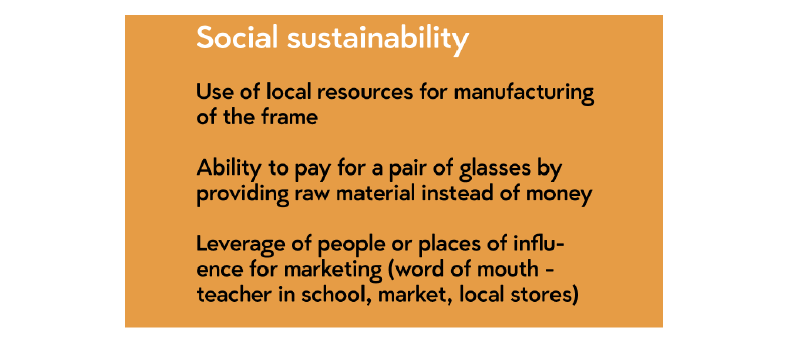
This is socially sustainable because the solution doesn’t rely only on cash as a form of payment; furthermore, the local structures of authority and gathering (schools, markets etc) are leveraged for marketing, diagnosis and distribution of the eye glasses.
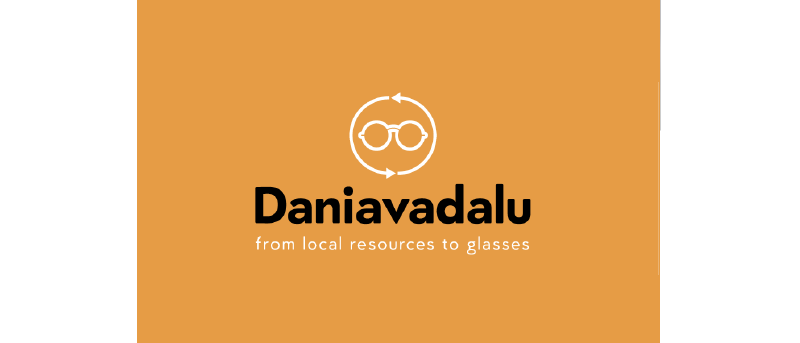
- Skeptical customers – by making the test readily available in places where the community gathers
- Financial – by allowing people to pay for the glasses with local resources, it will be made available to those who cannot afford it financially
Key learnings
Empathize
- Communication: How do we make our solution appealing to a population who might see eye care as a luxury? And how to adapt the messaging accordingly?
- Looking at alternative ways to support people who cannot afford to pay the “cheap” rate required to keep the social enterprise financially steady
Identifying and understanding the social structure
- Understanding and identifying key stakeholders with influence for the base of pyramid
- Thinking of how to advertise at a very low cost and for illiterate people of all ages
- Identifying stakeholders who can support the project
- Challenges in being able to accurately track metrics and success in operations
Business model based on partnerships
- Identifying the incentives for each partner: both at the local standpoint as well as in the developing world
- Pro-actively identifying challenges: What happens if one of the partner removes themselves from the equation? How do we keep this enterprise financially and socially sustainable?
Explore more projects on my portfolio!